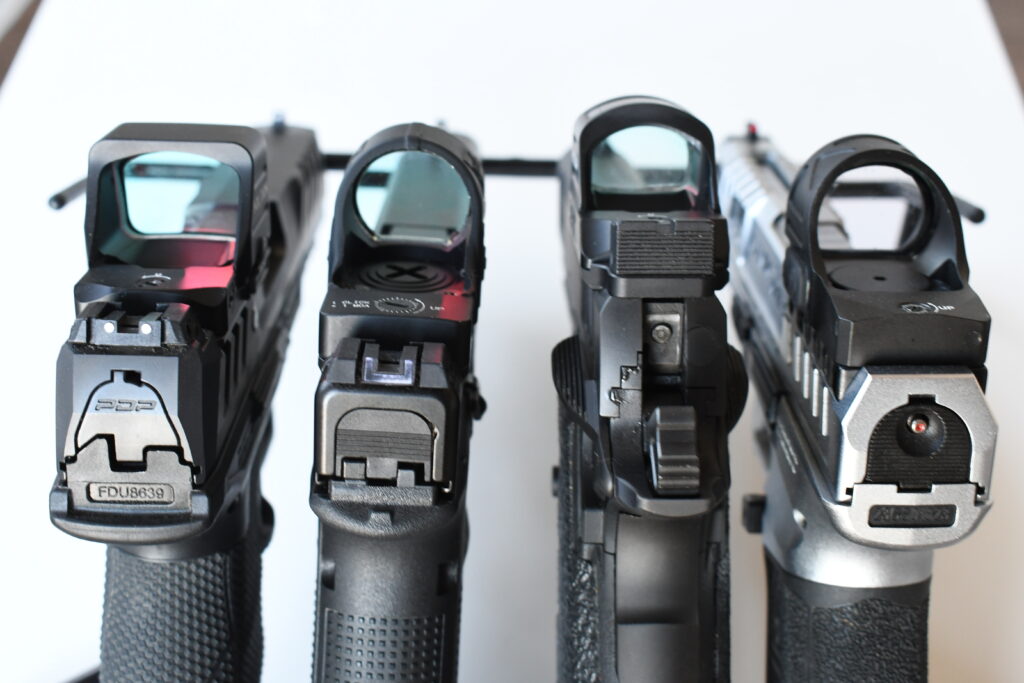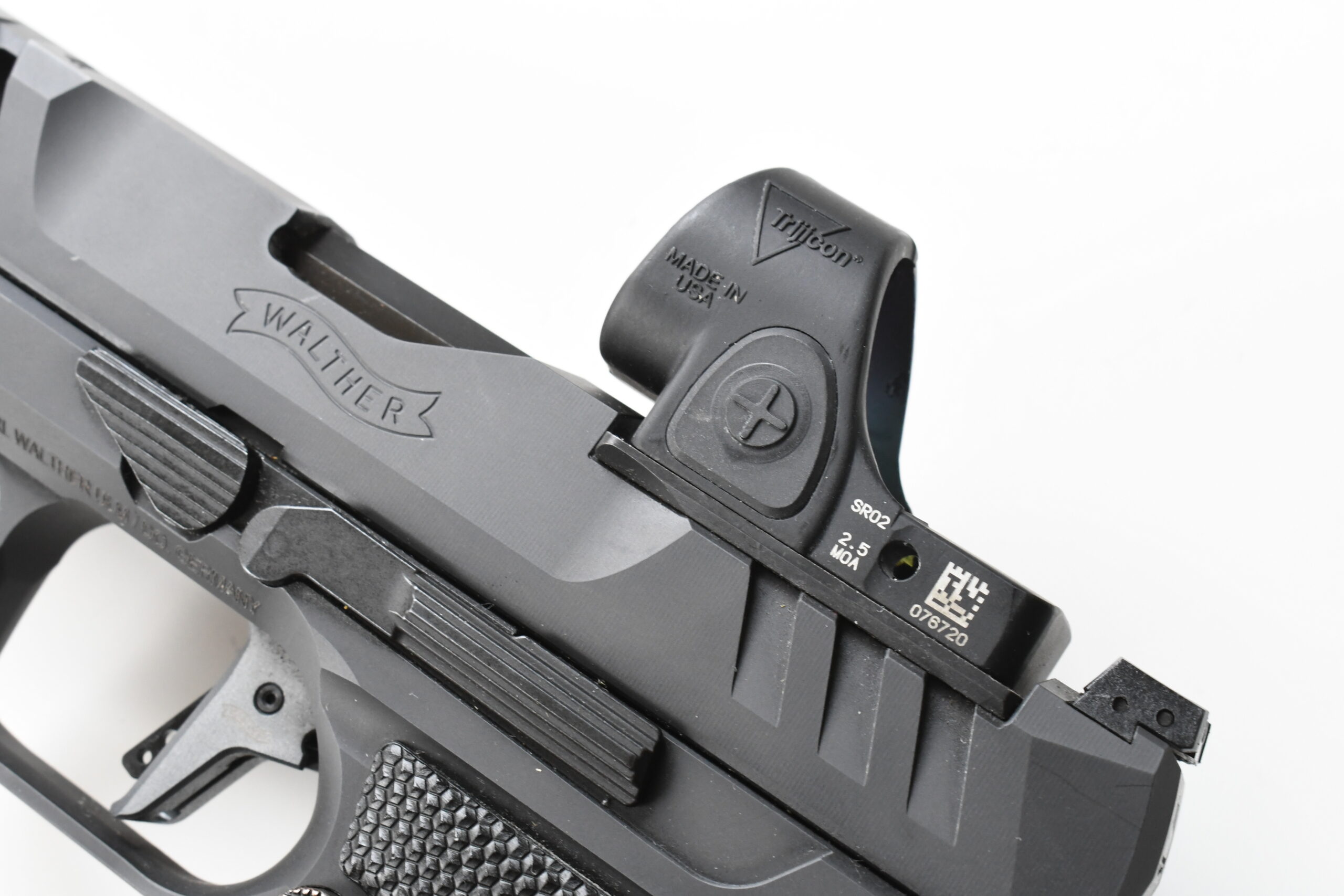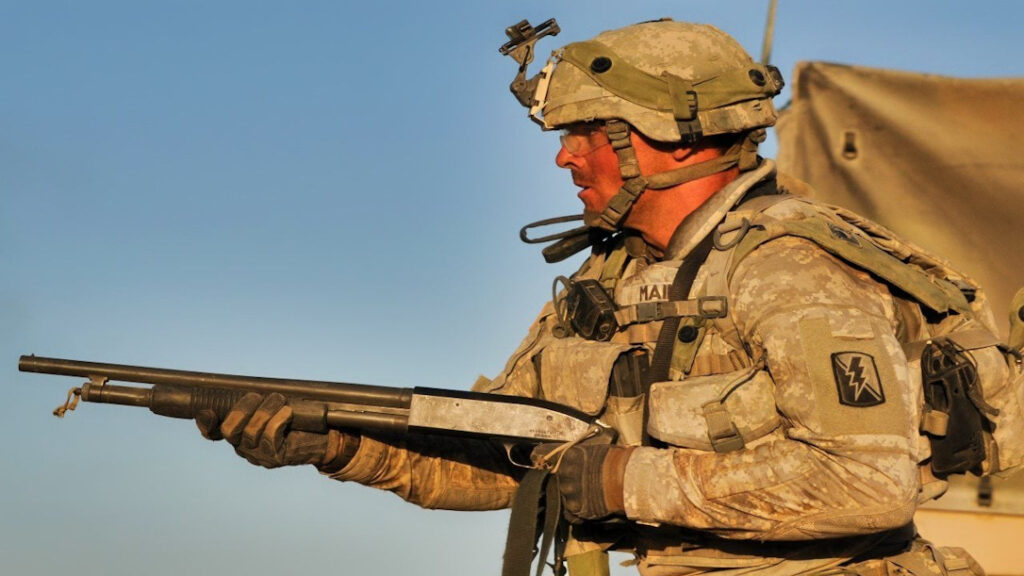In the world of red-dot sights, the Trijicon SRO (Specialized Reflex Optic) isn’t exactly new. It first saw the light of day nearly five years ago at the 2019 NRA Annual Meetings And Exhibits show held in Indianapolis, Indiana. However, in the ecosystem of slide-mounted reflex sights, the Trijicon SRO is still a cornerstone, especially in the premium performance reflex optic category. One could argue that it set the tone for its “weight-division.”
Certainly, five years after its launch, the Trijicon SRO is seeing stiff competition from other competitors at more affordable price points. In spite of this, the Trijicon SRO is the optic that set the tone in the first place.
Trijicon SRO Overview
The Trijicon SRO has a large and distinct circular window with a flat bottom that measures nearly a full inch tall and about ⅞ of an inch at its widest point. The SRO has three main sub-variants whose only practical difference is the size of the projected red dot. Sights are available with a 1 MOA dot, a 2 MOA dot, or a 5 MOA dot. All three variants use a red emitter only, and there are no other reticle options besides the standard basic red dot.
Advertisement — Continue Reading Below
The SRO runs off a CR-2032 battery that sits in an easy-to-reach battery tray at the base of the optic. A quality battery will last approximately three years on its medium setting at a standard ambient temperature of 70* F. While accessing the battery compartment isn’t as difficult as the SRO’s RMR sibling, it does require a specialized cruciform tool to unscrew the battery cover.
The optic body has brightness-adjustment buttons on either side, and its windage and elevation dials are in the usual spots. I appreciate that the dial slots are wide, and clicks are tactile and audible—something not featured on every Trijicon red-dot sight.
Mounting the SRO
Mounting-wise, Trijicon SROs use the same mounting footprint as its siblings, the Trijicon RMR and RCR. This footprint itself is also a cornerstone in the realm of pistol slide-mounted reflex sights and is one of the most popular and most used, even by other competitors. The SRO runs off a CR-2032 battery that sits in an easy-to-reach battery tray at the base of the optic.
Advertisement — Continue Reading Below
Because it matches in footprint, its base follows the same dimensions as the RMR and even the newer RCR. Unlike those two, the SRO is longer as its glass lens sits over a “parapet” that extends fore and over the base. For many shooters, this is actually a point of contention with the SRO, as some claim that the overhang can interfere with the proper ejection of brass on their specific pistol.
This is something I’ve specifically heard from dedicated double-stack 1911/2011 shooters, but I can’t speak to the phenomenon being substantive. These claims seem to be on an individual basis. Nevertheless, the SRO’s overhang gives the sight a very unique and distinctive profile that’s not seen on many other red-dots—other than those that directly mimic it.

Advertisement — Continue Reading Below
The SRO Experience
Shooting
Regardless of the gun it is mounted on, shooting with the SRO has always been a positive experience. To be honest, its circular window provides an excellent sight picture that I find conducive to target-focused shooting. This is true of large-window dots, but they’re more “visually comfortable” in addition to being more forgiving on subpar draws or target presentations.
After mounting it to the Canik Rival-S for its review, I recall the Canik factory plate sitting tall on the slide with the optic, but it didn’t matter because the sight’s window is so wide. The same is true for my experience with the the SRO on a Glock 34. I don’t hate the Glock grip angle, but it’s slightly swept back too much for optimum optics shooting (for me). Even so, the SRO had my back, and it wasn’t a big deal.
I’ve only ever put rounds through two SROs, mine and a friend’s (mounted on an M&P 2.0 5”). Both use a 2.5 MOA reticle, so I can’t comment on the 1 MOA or 5 MOA versions. Ultimately, I think this sight picture and the experience it provides can’t be beat. Being confined to only a central aiming point isn’t an issue either.
Advertisement — Continue Reading Below
Besides that, there’s a handful of shooters who like to carry with SROs because they claim that the rounded housing helps break up the lines of their mounted red-dots under their cover garment.
Using It On Various Pistols
Since the start of my “red-dot shooting experiences,” I made it a priority to start working with one of these Trijicon units due to its importance and position in the market. Given the assortment of red-dot optic models that pass through my hands and writer’s desk, keeping an SRO on hand has been invaluable. It is, after all, the “big-window benchmark.”

Advertisement — Continue Reading Below
I purchased my SRO used, so its true round count isn’t known. My own round count should be north of 800 between the Glock and Canik. It’s not much, sure, but considering all the dots and pistols I review, it’s something.
Last night, I pulled it off the Glock and swapped it around with the Trijicon RCR that was sitting on my Walther PDP Match Steel Frame. Suffice it to say, the Walther now proudly wears my SRO while the RCR sits on that Glock (I have a future project and evaluation in mind).
It was switching the sights around last night that inspired me to write this. Because of the SRO’s wonderful window, I think it’s better mounted on the PDP Match SF—a gun I know I can perform even better with compared to the Glock 34.
Advertisement — Continue Reading Below
SRO Quirks and Issues
As with all pieces of kit, SROs have their issues. Perhaps its single biggest issue is its cost. SROs aren’t cheap. Their real-world retail price can range between $500-$600 depending on the seller. Looking out for a used one in good condition is probably the best way to score a “deal” on one. That’s what I did, buying secondhand.
Cost aside, this sight can be affected by the “false reticle” phenomenon. Depending on the time of the day and the position of the sun in the sky, if the sun’s rays hit the lens just right, one can see a false or double dot, which can obviously be misleading. This phenomenon affects other sights as well, usually ones with angled lenses with sloped downward edges.
In the SRO’s case, its window is large and prominent, so it has a tendency to catch the sun and show the false dot. I don’t think it’s the end of the world because at least it’s daylight bright.
Advertisement — Continue Reading Below
Compared to other Trijicon dots like the RMR, RCR, or even the MRO, the blue tint on the SRO’s lens appears to be less severe. From my perspective, parallax and distortion appear to be extremely marginal, and they’ve never been an issue during shooting.
The Takeaway
I wouldn’t hesitate to call the Trijicon SRO the “king” of the RMR footprint performance red dots. There’s a good reason why several competitors are trying to mimic its form factor with the large and prominent window. It’s a winning formula from a design standpoint, which also enhances the shooting experience with any pistol. So it’s easy to understand why many of its competitors want to take a swipe at the SRO’s crown—”round window” competitors or otherwise (I’m looking at you, Holosun HS 507 COMP).

Advertisement — Continue Reading Below















